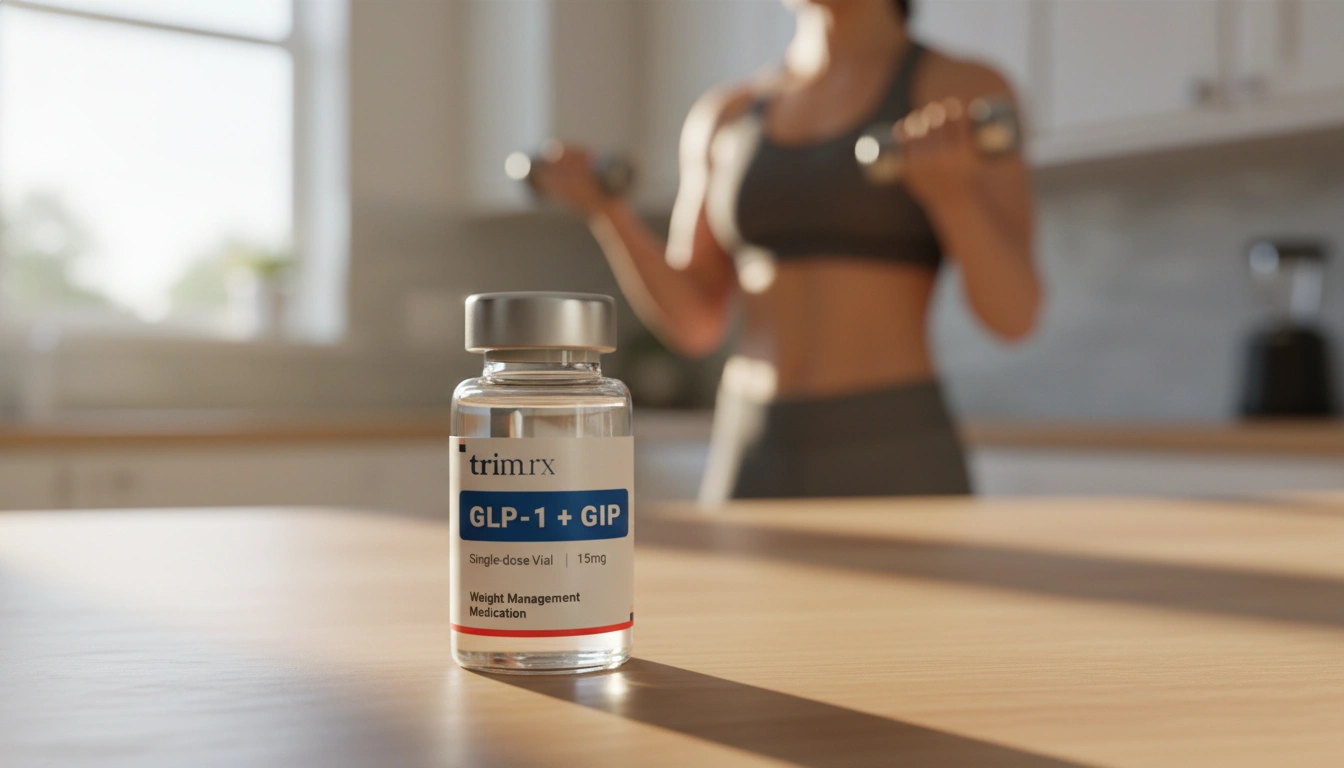Understanding GLP-1 Receptor Locations and Their Significance

Introduction
Did you know that the human body harbors intricate systems that regulate our appetite, insulin secretion, and even our emotional responses? One key player in this complex network is the glucagon-like peptide-1 (GLP-1) and its receptor, known as GLP-1R. This fascinating hormone is not just a biochemical curiosity; it plays a pivotal role in maintaining glucose homeostasis, influencing metabolism, and even affecting our overall well-being. Understanding where GLP-1 receptors are located can shed light on their multifaceted roles in human health.
The journey of GLP-1 and its receptors began in the early 1980s when researchers identified GLP-1 as an incretin hormone that enhances insulin secretion from the pancreas. Since then, the study of GLP-1 has evolved significantly, leading to groundbreaking therapies for conditions such as type 2 diabetes and obesity. Today, GLP-1 receptor agonists have become a cornerstone in the management of these conditions, demonstrating not only efficacy in glycemic control but also potential benefits in weight management and cardiovascular health.
In this blog post, we will delve into the anatomical and physiological aspects of GLP-1 receptors. We will explore their locations throughout the body, the implications of their distribution, and how this knowledge can inform personalized weight loss solutions. By the end of this article, you will have a comprehensive understanding of where GLP-1 receptors are located and their significance in our health journey.
Let’s embark on this exploration together, starting with a brief overview of GLP-1 and its receptors.
What is GLP-1?
GLP-1 is a 30 or 31-amino acid peptide hormone primarily secreted by the L-cells in the intestines in response to nutrient intake. It plays several critical roles, including:
- Stimulating Insulin Secretion: GLP-1 enhances glucose-dependent insulin secretion from pancreatic beta cells, helping to regulate blood sugar levels.
- Reducing Glucagon Release: It inhibits glucagon secretion, which in turn reduces glucose production by the liver.
- Delaying Gastric Emptying: This action contributes to a feeling of fullness, aiding in appetite regulation and weight management.
However, GLP-1 has a short half-life of about 1-2 minutes due to rapid degradation by the enzyme dipeptidyl peptidase-4 (DPP-4). This has led to the development of GLP-1 receptor agonists, which are designed to mimic GLP-1’s effects while resisting degradation, thus providing longer-lasting benefits.
The Anatomy of GLP-1 Receptors
Understanding where GLP-1 receptors are located is vital for appreciating their function. GLP-1 receptors (GLP-1R) are G protein-coupled receptors (GPCRs) that are expressed in various tissues throughout the body, including:
- Pancreas: The most well-known location, where GLP-1R is found on insulin-secreting beta cells. Activation of these receptors enhances insulin secretion and promotes beta-cell survival.
- Central Nervous System (CNS): GLP-1 receptors are present in several brain regions, including the hypothalamus, brainstem, and other areas involved in appetite regulation and energy homeostasis. This distribution suggests a role in controlling hunger and satiety.
- Gastrointestinal Tract: Beyond its secretion from the intestines, GLP-1R is also found in other parts of the GI tract, where it plays a role in gut motility and hormone secretion.
- Heart: Emerging research has shown that GLP-1R is present in cardiac tissues, where it may influence cardiovascular health.
- Kidneys: GLP-1R is also expressed in the kidneys, where it may have a role in renal function and fluid balance.
The wide distribution of GLP-1 receptors emphasizes their importance not just in blood sugar regulation but also in broader metabolic processes and organ health.
Exploring Specific Locations of GLP-1 Receptors
Understanding the specific locations where GLP-1 receptors are found can provide insights into how GLP-1 influences various physiological functions:
1. In the Pancreas
The pancreas is the primary site of GLP-1 action. GLP-1 receptors are primarily located on:
- Beta Cells: GLP-1 binding to its receptor on beta cells enhances insulin secretion, particularly in response to elevated blood glucose levels. This mechanism is crucial for maintaining glucose homeostasis.
- Alpha Cells: GLP-1 receptors are also found on alpha cells, where they inhibit glucagon release, further contributing to blood glucose regulation.
2. In the Central Nervous System
In the brain, GLP-1 receptors are distributed in several areas, including:
- Hypothalamus: This region is crucial for appetite regulation. GLP-1 receptor activation here promotes feelings of fullness and reduces food intake, which is particularly beneficial for weight management.
- Brainstem: GLP-1 receptors in the brainstem are involved in the autonomic regulation of energy homeostasis and may influence cardiovascular functions.
- Cortex: Some studies indicate that GLP-1R is present in the cortex, suggesting a role in cognitive functions and emotional responses related to food intake.
3. In the Gastrointestinal Tract
The presence of GLP-1 receptors in the gastrointestinal tract underscores their role in digestion and satiety:
- L-cells: These enteroendocrine cells in the intestine secrete GLP-1 in response to food intake, but they also have GLP-1 receptors that may enhance local signaling.
- Smooth Muscle: GLP-1 receptors in gastrointestinal smooth muscle can influence motility and gastric emptying, further modulating appetite and digestion.
4. In the Heart and Blood Vessels
- Cardiac Muscle: GLP-1 receptors are expressed in cardiac tissues, where they may provide cardioprotective effects through improved endothelial function and reduced inflammation.
- Blood Vessels: Research suggests that GLP-1 may help in maintaining vascular health, possibly reducing the risk of cardiovascular diseases.
5. In the Kidneys
- Renal Tubules: GLP-1 receptors in the kidneys may play a role in regulating renal blood flow and glomerular filtration, which is vital for fluid and electrolyte balance.
The Role of GLP-1 Receptors in Health and Disease
The widespread distribution of GLP-1 receptors signifies their importance in various health processes. Here’s how they contribute to different health aspects:
1. Diabetes Management
GLP-1 receptor agonists have emerged as a crucial component in managing type 2 diabetes. By promoting insulin secretion and inhibiting glucagon release, these medications help maintain blood sugar levels. Clinical trials have shown that GLP-1 receptor agonists can lead to significant reductions in HbA1c, a key marker of long-term glucose control.
2. Weight Management
The appetite-regulating effects of GLP-1 are particularly relevant in the context of obesity. By activating GLP-1 receptors in the brain, these agents promote satiety and can help reduce caloric intake. This makes them an attractive option not only for diabetes management but also for individuals seeking sustainable weight loss solutions.
3. Cardiovascular Health
Emerging evidence suggests that GLP-1 receptor agonists may offer cardiovascular benefits beyond glucose control. Studies indicate that these agents can reduce the incidence of major cardiovascular events in diabetic patients, suggesting a protective effect on heart health.
4. Neurological Implications
GLP-1 receptors in the brain have been implicated in cognitive functions and emotional responses. With growing interest in their potential neuroprotective effects, research is exploring how GLP-1 receptor activation may influence conditions such as Alzheimer’s disease and other neurodegenerative disorders.
The Importance of Personalized Approaches
At TrimRx, we believe in the power of personalized solutions for weight management. Understanding the intricate roles of GLP-1 and its receptors allows us to tailor our weight loss programs to meet individual needs. Our approach emphasizes:
- User-Friendly Assessments: We provide a free assessment quiz to determine eligibility for our personalized weight loss medications, which include options like Semaglutide and Tirzepatide.
- Medically Supervised Care: Our programs combine advanced medical science with compassionate support, ensuring that each individual receives the care they deserve.
- Comprehensive Support: We offer ongoing support to our clients, recognizing that weight loss is a journey that extends beyond medication.
To see if you qualify for our prescription weight loss medications, we invite you to take our free assessment quiz here.
Conclusion
In conclusion, the locations of GLP-1 receptors throughout the body underscore their significance in various physiological processes. From regulating insulin secretion in the pancreas to influencing appetite in the brain, GLP-1 receptors play a multi-faceted role in health and disease. Understanding these dynamics not only enhances our knowledge of metabolic regulation but also informs personalized approaches to weight management and overall wellness.
As we continue to explore the potential of GLP-1 and its receptor agonists, we remain committed to providing our clients with safe, effective, and personalized weight loss solutions. Whether you’re seeking to manage diabetes, lose weight, or improve your overall health, our team at TrimRx is here to support you every step of the way.
FAQ
What are GLP-1 receptors?
GLP-1 receptors are G protein-coupled receptors that bind to the hormone glucagon-like peptide-1 (GLP-1). They are involved in regulating insulin secretion, appetite, and various metabolic processes.
Where are GLP-1 receptors located?
GLP-1 receptors are found in several locations, including the pancreas, central nervous system (particularly the hypothalamus and brainstem), gastrointestinal tract, heart, and kidneys.
How do GLP-1 receptor agonists work?
GLP-1 receptor agonists mimic the effects of GLP-1 by enhancing insulin secretion, inhibiting glucagon release, and promoting satiety, thus helping to regulate blood sugar levels and support weight management.
Are GLP-1 receptor agonists safe?
GLP-1 receptor agonists have been studied extensively and are generally considered safe. However, like all medications, they may have side effects, and it’s essential to discuss your medical history with a healthcare provider before starting treatment.
How can TrimRx help with weight management?
At TrimRx, we offer personalized weight loss programs that include medically supervised care, ongoing support, and access to prescription medications like Semaglutide and Tirzepatide. To see if you qualify for our programs, take our free assessment quiz here.

Transforming Lives, One Step at a Time
Keep reading
7 Tips for Sticking to GLP-1 Injection Schedules
Seven practical strategies to keep weekly GLP‑1 injections on schedule—pick a routine day, set reminders, manage side effects, rotate sites, and avoid missed doses.
Custom GLP-1 Dosing for Kidney Disease
Personalized GLP-1 dosing for CKD patients with monitoring, dehydration and hypoglycemia risk mitigation, and guidance across all kidney disease stages.
Semaglutide vs Tirzepatide: Approved Uses
Two leading diabetes and weight-loss drugs differ in FDA-approved benefits — one adds heart, kidney and liver protection; the other treats obstructive sleep apnea.



